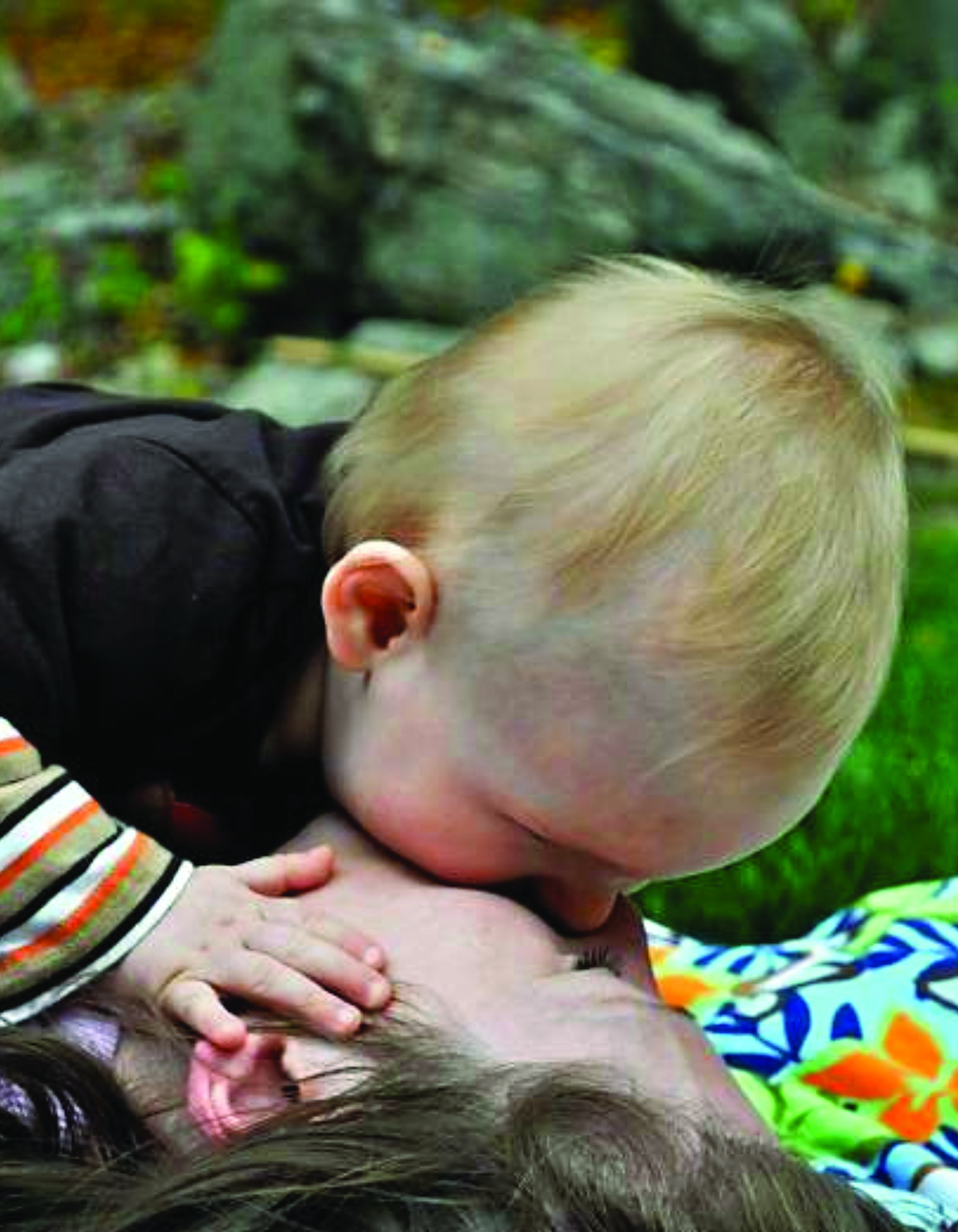
Healthy Kids
Healthy Kids
The Magic of Parent-Child Synchrony: How Skin-to-Skin Contact Helps Development
Imagine being an infant born only moments ago. The onslaught of new sensations must be overwhelming as they suddenly feel the weight of a once-buoyant body. Eyes that saw only muted shades are now confronted by the harshness of bright lights.
For nine months, there were no pangs of hunger, but now they will crave nourishment with every fiber. The warmth, comfort and safety of the womb has been replaced with uncertainty, and the child’s cardiovascular, digestive and immune systems must quickly adjust to new demands.
The simple act of placing a newborn on mom’s chest, referred to as Kangaroo Care, can produce remarkable benefits. When it is done for 60 to 90 minutes, this skin-to-skin contact initiates a cascade of physiological effects that optimize every organ system in the infant’s body and promote breastfeeding. The mother also receives benefits, such as reduced stress hormone levels and greater amounts of oxytocin, the hormone that plays a vital role in postpartum healing, breastfeeding and pair bonding.
Benefits of Close Physical Contact
In 2021, the Proceedings for the National Academy of Sciences of the United States of America published a study examining the long-term effects of Kangaroo Care. For two decades, researchers followed preterm and full-term babies; some had received Kangaroo Care (or skin-to-skin contact), and others had not. The children were assessed at four months, three years, 12 years and 20 years.
The scientists concluded that early experiences of frequent, close physical contact play an important role in a child’s social-emotional development and were predictive of a child’s ability later in life to interact with peers, regulate emotions, manage stress and show empathic understanding. According to the authors, bodily contact may provide a bridge from prenatal life to postnatal social life.

Using a method called hyper-scanning, with advanced imaging techniques, scientists sought to identify what was being exchanged between mother and child that yielded such dramatic outcomes. They found that the pair’s neural activity coordinated or synchronized with one another, which led to benefits for the child’s nervous system, immune system, body function and behavioral development.
This synchrony was also present when the parent and child were near one another, not just when practicing Kangaroo Care. Certain factors strengthened synchrony, such as physical proximity and affectionate touch, which activates dopamine and other feel-good chemicals in the child’s brain, enhancing cognitive functioning such as social learning and reward processing, vital in preventing major mood disorders and addictions.
In effect, Kangaroo Care (both with or without clothing), carrying an infant in a carrier or sling, frequent or on-demand feedings, sleeping near one another and infant touch or massage promote what has been scientifically termed parent-child interaction synchrony.
Emerging Understanding of Carry Care
A child’s brain continues to grow after birth, and by age 1, the average baby’s brain is about 60 percent of an adult’s brain size. During that first year of postpartum development, caretakers must provide the correct habitat to help the infant cope with its immaturity.
According to anthropological evidence, an optimal habitat can be provided through what is termed carry care, which provides opportunities for close contact and promotes parent-child interaction synchrony. Anthropologists also point out that in Western society parents have evolved away from carry care and toward nest care, where the baby is placed apart from the caregiver.
However, the science suggests that closer contact is beneficial. Interaction synchrony seems so impactful that lack of it may have implications for the development of autism spectrum disorder and other neurobehavioral disorders. Currently, interaction synchrony is one of the most studied subjects in modern science, as it has recently been found to exist in a variety of relationships, not just between a parent and child. Yet, for all its profound implications, its relational and developmental dynamics remain a mystery.
Until interaction synchrony unveils more of its secrets, holding and embracing our babies just a little bit longer may be advisable for the health of their growing minds and bodies.
Christine Ramos, the author of A Journey Into Being: Knowing and Nurturing Our Children As Spirit, is a maternal-child health registered nurse who has worked as a certified childbirth educator, certified doula, certified case manager and an internationally board-certified lactation consultant.
This article first appeared in EcoParent magazine and is adapted and reprinted with permission.
Original article published at Natural Awakenings


 By
By







